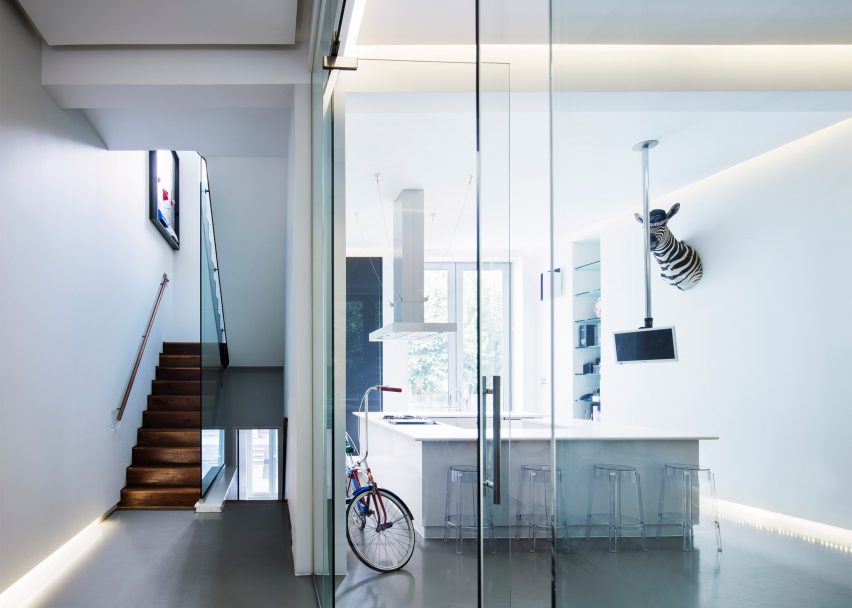
Tinie Tempah: "I bought a zebra so the giraffe could have a friend in the house"
Five years ago British rapper Tinie Tempah bought a house designed for the late Alexander McQueen. In this exclusive interview and photoshoot, Tinie reveals how he adapted the house, added more taxidermy and how he plans to move into architecture himself.
"Not everyone gets to say I've got Alexander McQueen's house to put their own spin on," said the 28-year-old songwriter, who bought the east London home in 2012 following the huge success of his debut single Pass Out.
Update 27/3/17: since publishing this story we have learned that the house was in fact designed and refurbished by Huw Burgess of OPEN London, not by David Adjaye as originally stated. More details soon.
Tinie – the artist with the most UK number ones this decade and a regular on GQ magazine's annual list of best-dressed men – said he wasn't very aware of Adjaye's architecture until he bought the house.
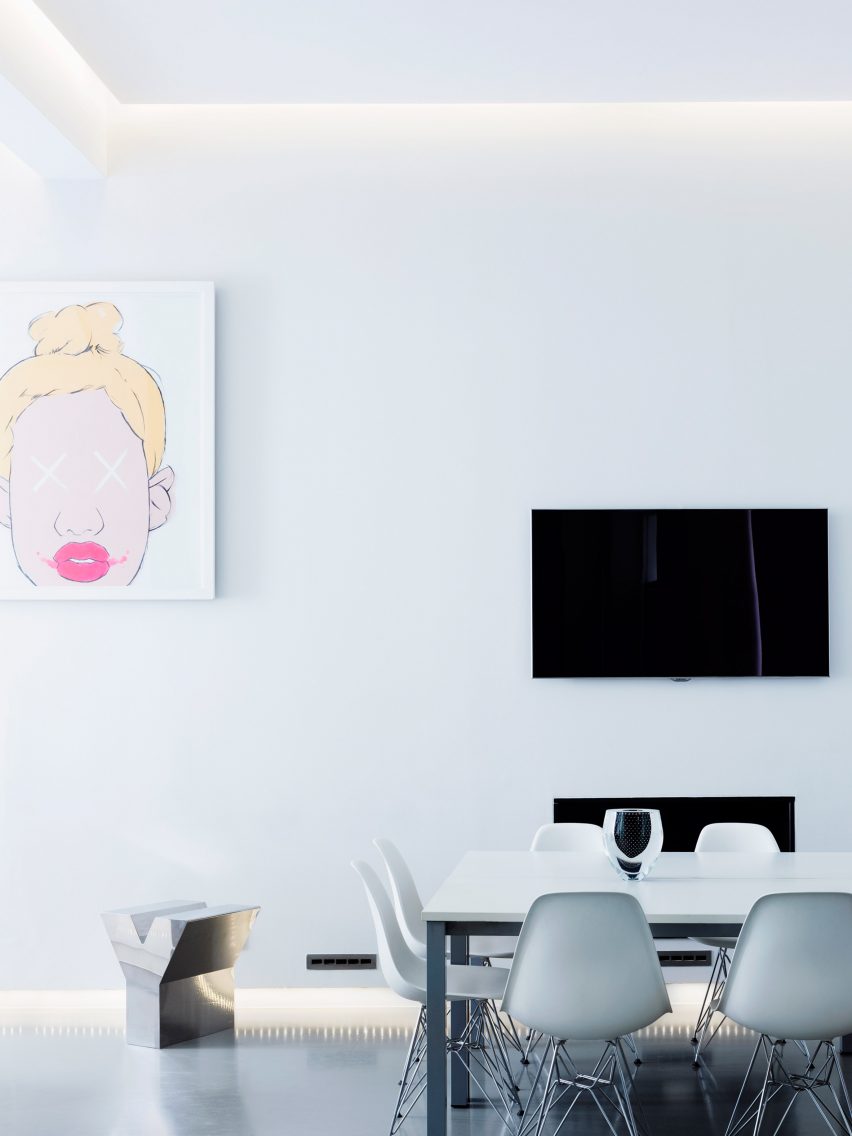
"When I saw it, I remember I was 22 or 23 at the time, it just felt like a place I needed to be in," said the musician, whose real name is Patrick Chukwuemeka Okogwu.
"I wasn't so up on [Adjaye] but when I bought the house I looked into his work a bit more. I'm a fan and just the fact that he's African as well, I was really inspired by what he'd done."
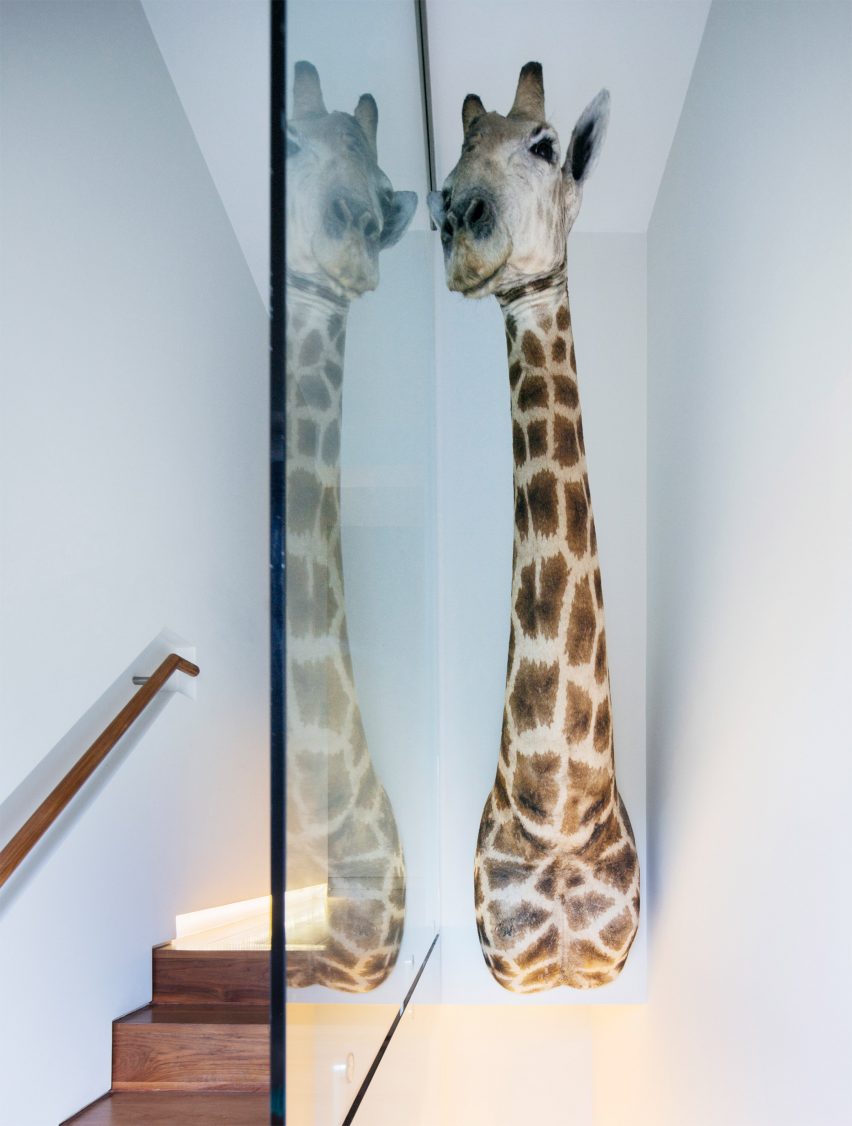
London-based Adjaye, who was born in Ghana, is the architect behind the new Smithsonian National Museum of African American History and Culture in Washington DC. But he made his name with a series of London houses, including the iconic Dirty House.
Tinie is now hoping to meet Adjaye and would like to collaborate with the architect on a project.
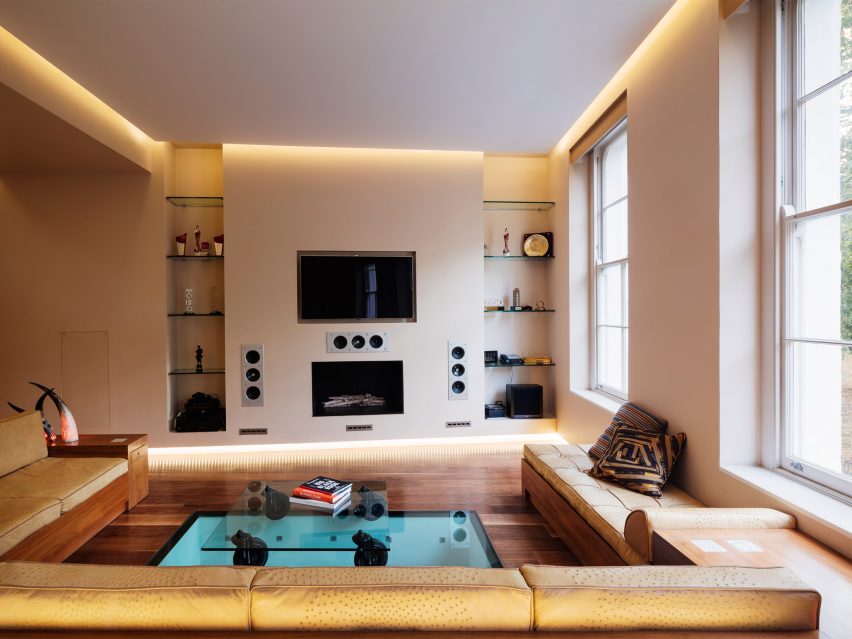
"I want to put it out there, I haven't had the pleasure to meet David Adjaye yet, even though there's been a few times when we were meant to be at the same place," he said.
"I want to design a really incredible countryside, modern farmhouse. That would be pretty epic and I definitely want to reach out to Adjaye to help me do that."
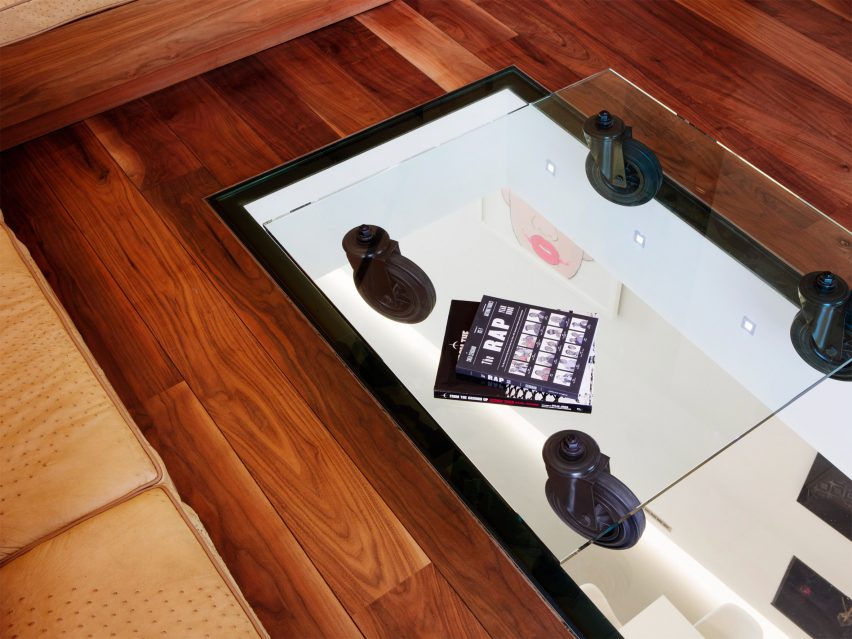
Tinie has kept many of the features installed by Adjaye and fashion designer McQueen at the Victorian property, which is on a terrace facing Victoria Park in Hackney, east London. These include a giant golden L-shaped ostrich-leather sofa, a pond full of koi carp and a stuffed giraffe.
Tinie told Dezeen that he added more taxidermy to the house, which he assured us is ethically sourced. "The giraffe was already there, but I bought a zebra, which is my favourite animal, so that the giraffe could have a friend in the house," he said.
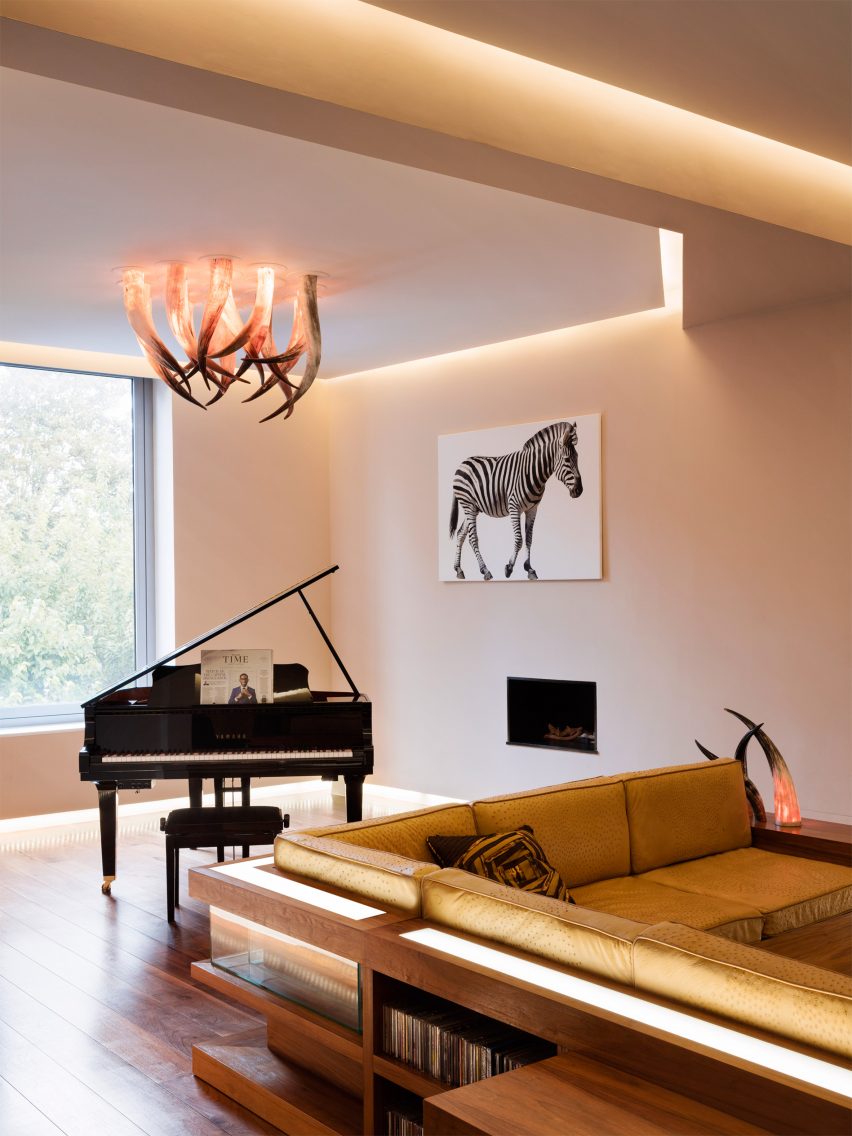
The rapper – whose hits include Miami 2 Ibiza, Girls Like and Not Letting Go – has made several other bold and boyish additions to the house. He has put a hot tub on the roof, transformed the outhouse into a "chilling room" and installed a high-tech sound system throughout the property.
He has also redesigned the basement, where he spends most of his time.
"I've always watched American TV shows like Cribs and I was just like shit, I've got a basement, let me make it super cool," Tinie said. "I just turned it into a boys room. I added some concrete to the walls just to give it a New York warehouse, apartment feel."
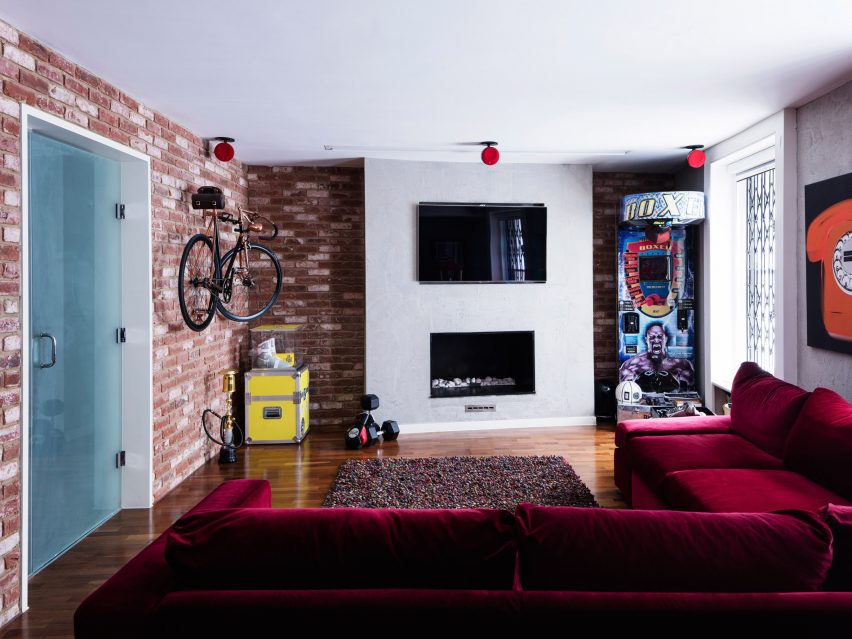
The basement also features a wall of trophies, a pinball machine, a pair of Back to the Future Nike Air Mags housed in a vitrine, and a one-man gym.
As well as dabbling in interior design, Tinie has designed several items of clothing, most recently launching his own menswear line What We Wear. His record label Disturbing London – which he set up with his cousin Dumi Oburota, and which is located next door to Dezeen's office – also has its own fashion line.
This is natural, Tinie claims. "I think creatives are quite multifaceted," he said. "We live in a world where everyone likes to have labels and be boxed off. So unless you went to university and you have a degree in this particular thing, you can't be that."
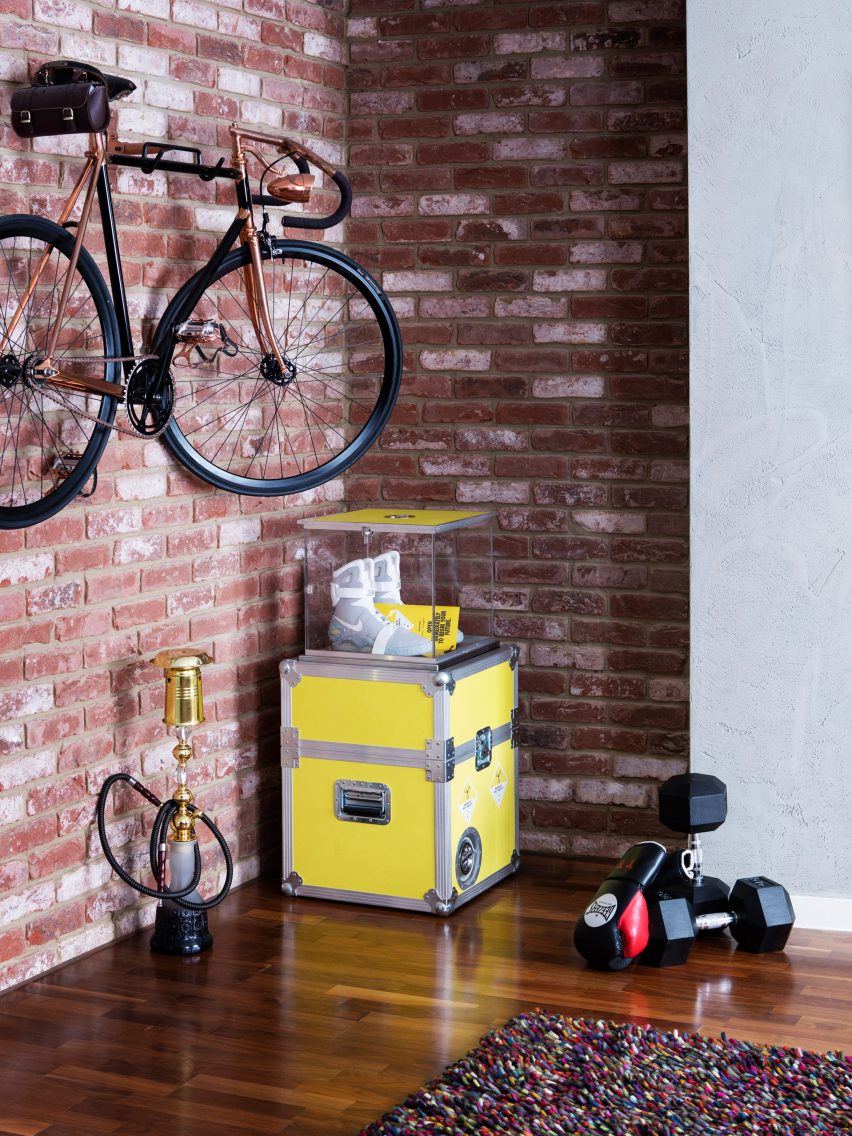
By delving into design, Tinie is following a growing line of music industry figures including Kanye West, Will.i.am and Pharrell Williams, who are moving beyond music to express their creativity.
"I'm a huge Kanye fan," he admitted. "I love his music, I love his visuals, I love the movies that he's put together, I love his trainers. So why wouldn't he able to design an apartment that I liked?"
The musician, entrepreneur and style icon now intends on adding architecture to his list of credentials.
"I definitely want to get involved more in education and the way people learn, so I guess the way schools are designed and departments of schools," Tinie told Dezeen. "I've even toyed with the idea of one day designing university accommodation."
Photography is by Rory Gardiner, with styling by Emma Lynne Archer.
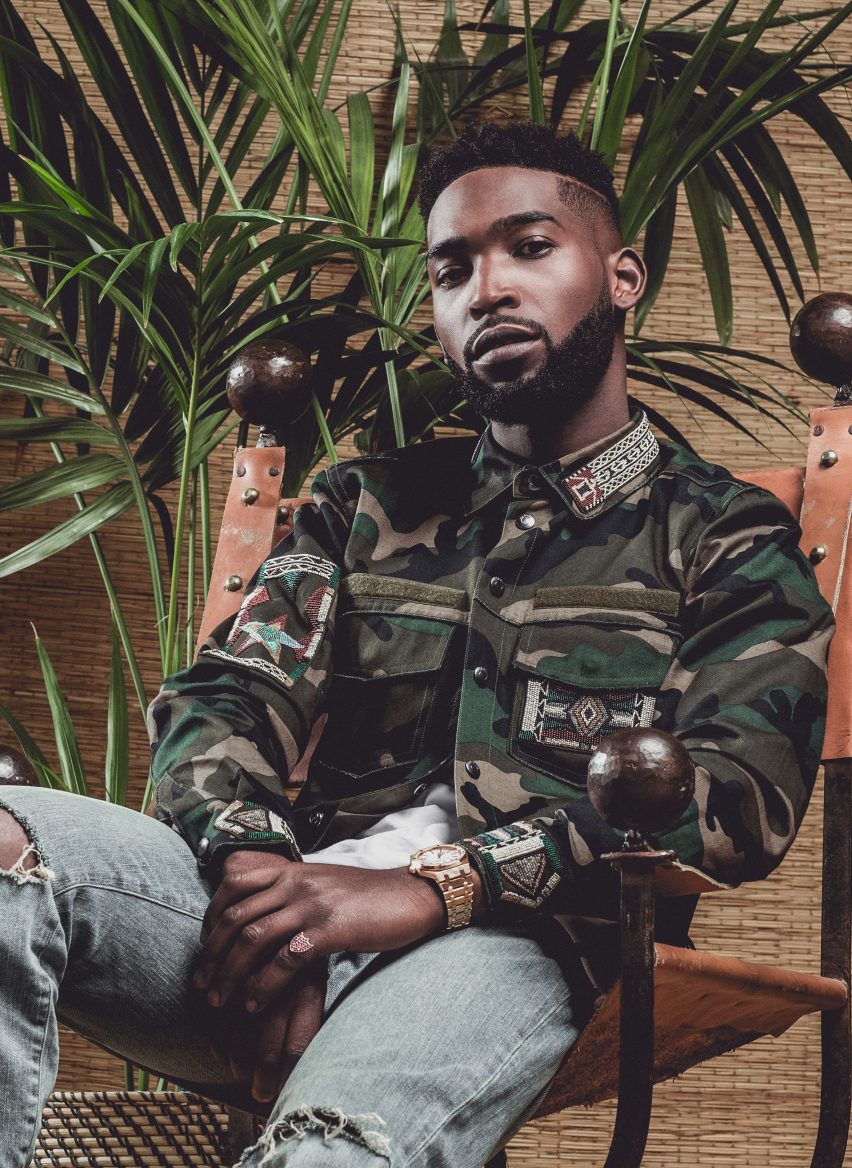
Read the edited transcript of our interview with Tinie Tempah:
Olivia Mull: Can you start by talking about the design and history of the house.
Tinie Tempah: It was Alexander McQueen's house and I got it off of his estate. David Adjaye designed it.
It's an east London Victorian house. I know [Adjaye] spent quite a bit on restructuring the inside for McQueen and added a lot of taxidermy. Mostly African-inspired taxidermy and horns.
When I saw it, I remember I was 22 or 23 at the time, it just felt like a place I needed to be in.
Olivia Mull: Did you know much about Adjaye before you bought the house or was it the McQueen connection that tempted you?
Tinie Tempah: I wasn't so up on [Adjaye] before but then when I bought the house I looked into his work a bit more. I knew he designed the Ozwald Boateng store and one or two other buildings in east London. One called Dirty House. I'm a fan and just the fact that he's African as well, I was really inspired by what he'd done.
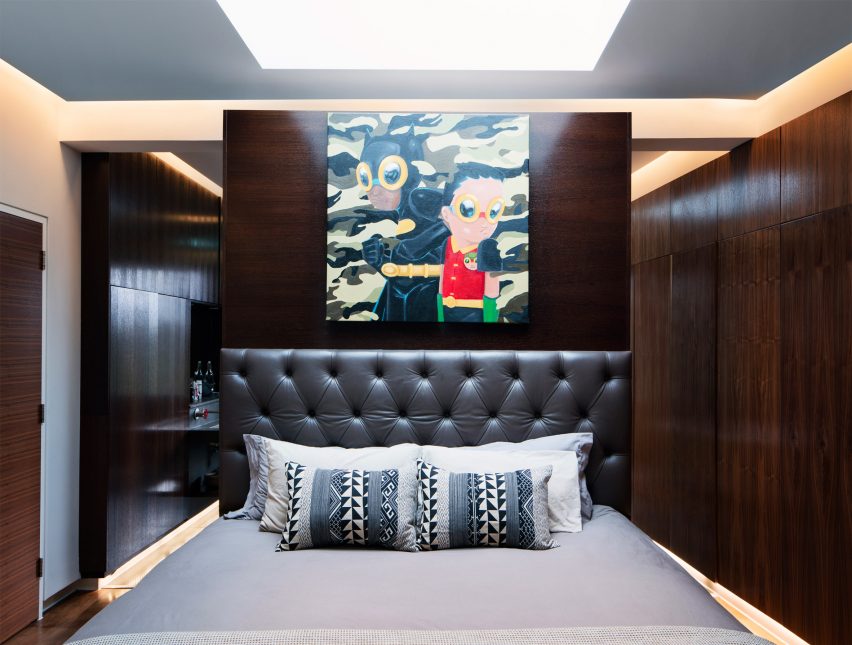
Olivia Mull: What was the house like when you bought it from McQueen's estate and how have you altered it?
Tinie Tempah: When I first saw the house some people were renting it and there was a bit of wear and tear, so I just did a complete refurb.
Outside McQueen had a garden at the back where he attended to fish. I made a point of getting some koi carp and continuing the tradition. I also turned his outhouse into a den for me and my friends. I put some electrics in there, a TV on the wall and some art on the walls. I made it really, really cool. It is kind of an outdoor chilling space.
I added some new taxidermy as well. The giraffe was already there, but I bought a zebra, which is my favourite animal, so that the giraffe could have a friend in the house.
Downstairs, the basement was kind of an unloved area and I just turned it into a boys room. I was so happy that I had a basement, I've always watched American TV shows like Cribs and I was just like shit, I've got a basement, let me make it super cool.
I added some concrete to the walls just to give it a New York warehouse, apartment feel. I exposed some of the brick and added a glass partition that goes towards the steam room. I put in a punching bag and a punching machine, and I also turned what used to be some extra space, into a little mini-gym, a one-man gym, which is quite cool.
It's a proper boys show-off underground trophy space. I've got my Nike Mags there and I put my plaques on the way into the basement on the wall and then I lit it with LED lights.
When you get into my bedroom… did you go into my bedroom?
Olivia Mull: Yeah, I went into your bedroom.
Tinie Tempah: This is so weird! But anyway, in my bedroom there is a whole row of brown wardrobes, top to bottom, and a glass wardrobe for the trainers. I designed this because I needed somewhere to make all my trainers look beautiful and nicely put.
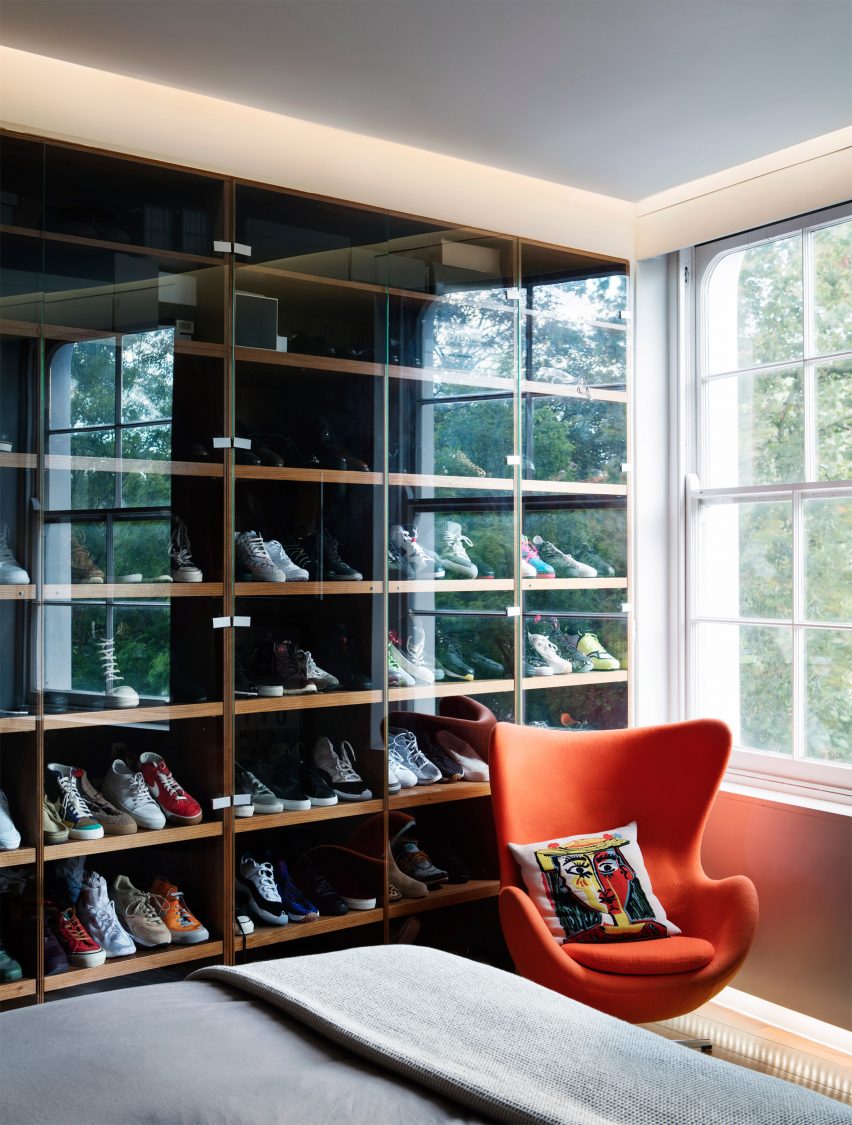
Olivia Mull: So where do you spend most time in the house?
Tinie Tempah: I would say the basement and the main kitchen. The main kitchen because of how bright it is. It's white and quiet, it makes me feel clear-headed. McQueen had this amazing glass structure where you can see through the kitchen. And the basement more to chill, to watch movies, lots of Narcos going on down there.
Olivia Mull: Is it a good space for songwriting?
Tinie Tempah: Yes definitely. That's another one of the modifications I made. I can't live anywhere where I can't access music and hear it everywhere in the house instantly, so there's lots of high-tech shit. I put speakers into the ceiling, then I have this amazing control system so I can literally send music anywhere. You can get an instrument straight on your phone and it doesn't matter whether I'm in the steam room, in my bedroom, in the toilet, there are speakers everywhere.
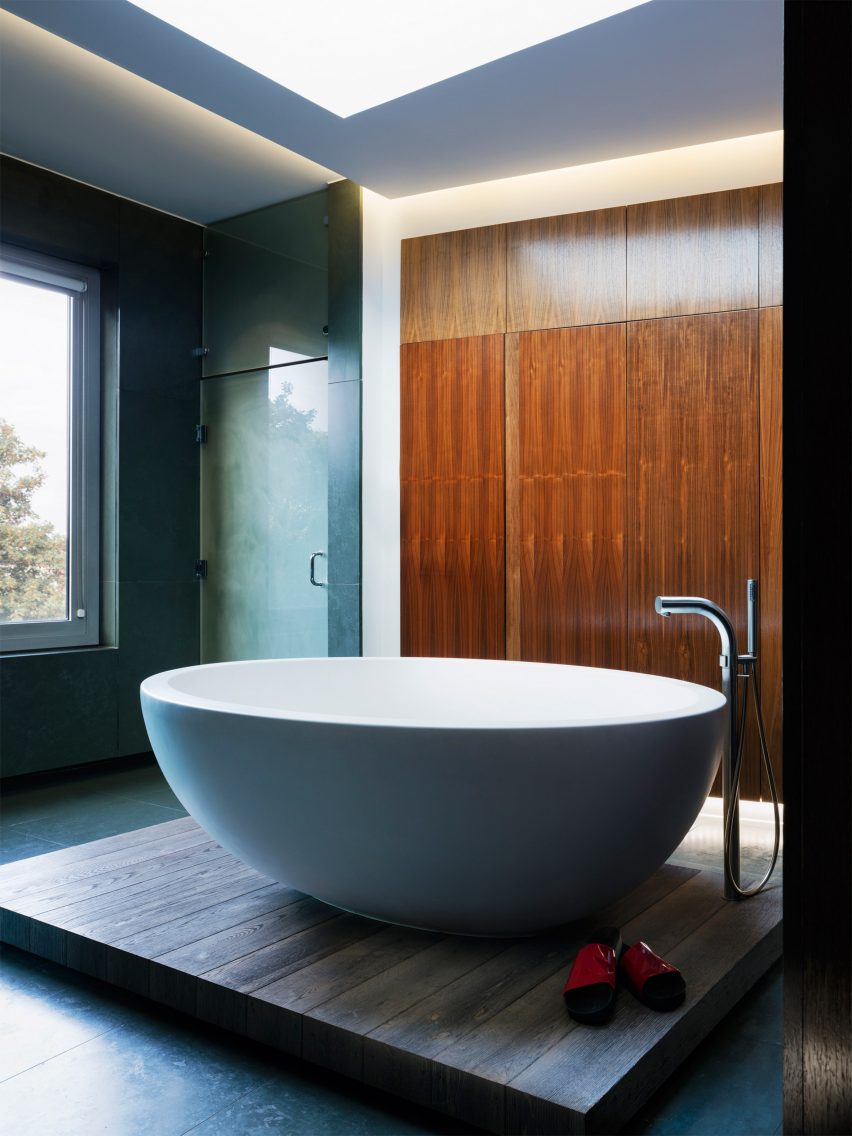
Olivia Mull: Does the architecture and design of a space make a big difference to you when you're trying to songwrite and be creative?
Tinie Tempah: I think the main thing is just the energy of the room and I think architecture and design plays a big part in that. When you go into a room and the room feels calm, you feel like you are able to think.
Even with the Japanese garden, which is McQueen's design, is very zen. There is even a buddha all the way at the very back.
Olivia Mull: As well designing the interiors for your house, you've got a clothing range and with your label Disturbing London, you've collaborated with brands including Nike. Do you enjoy designing?
Tinie Tempah: Yes definitely. I think creatives are quite multifaceted. We live in a world where everyone likes to have labels and be boxed off. So unless you went to university and you have a degree in this particular thing, then you can't be that.
But I think if you talk to most creatives, it's like, in the same way that I write songs and oversee the way my video looks and very much drive the creative direction, is the same way that I'm into clothes, I'm into fashion, and I appreciate good set design.
So once you start getting into that, being a set designer and stuff, it's quite easy. I mean it's not easy, and I guess not everyone gets to say 'let's go wild, I have Alexander McQueen's house to put my own spin on or adaptation on', but I guess most creatives would be able to do that quite naturally.
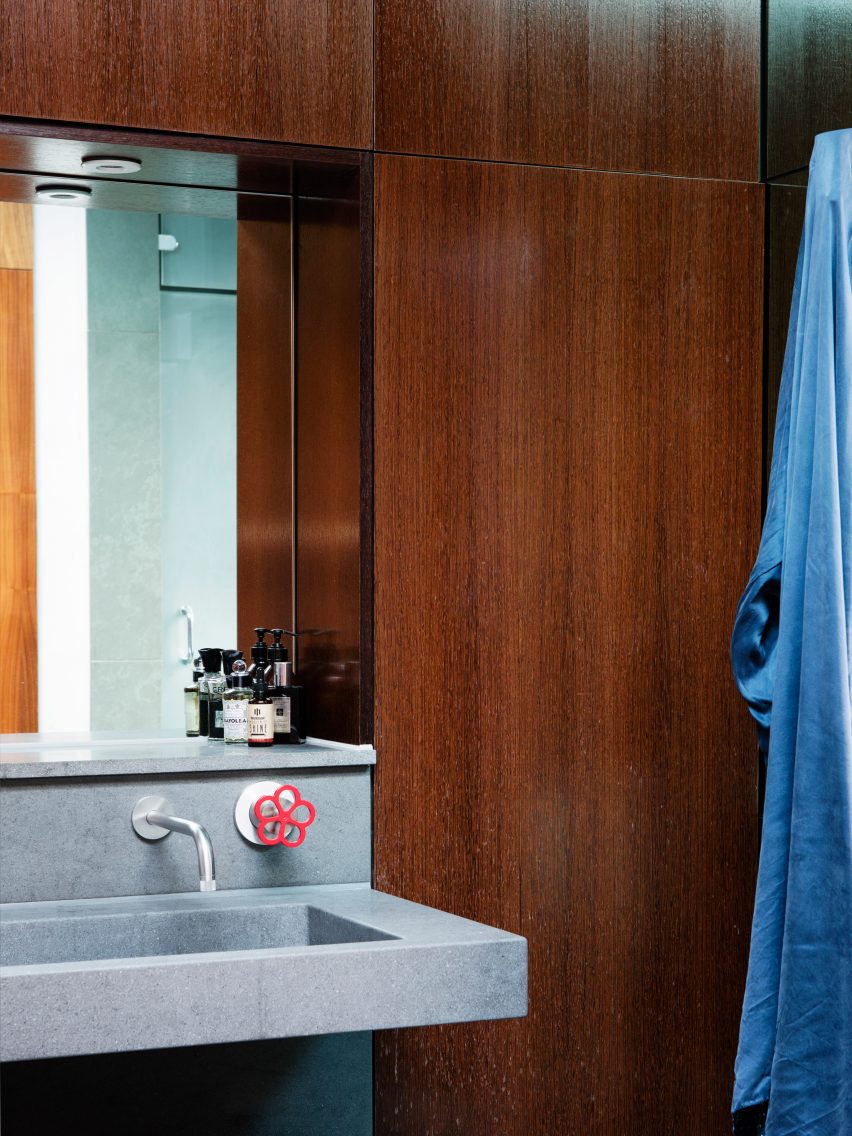
Olivia Mull: Is there anything that you would particularly like to design or people you would like to collaborate with?
Tinie Tempah: To be honest, in the future, I definitely want to get involved more in education and the way people learn, so I guess the way schools are designed and departments of schools. I would love to be able to get involved especially the creative departments of schools. There isn't any particular architects that I would want to work with per say.
Disturbing London have an office but I also have a creative agency that's called Imhotep. Imhotep have their own offices in south London. We have two studios there and that's something we're looking to expand. Then we'd like to create a creative space for professional musicians to live for a little while, so you can rent a studio in a like-minded environment that is very stylistic and what not. That's another space where I'm going to get to spread my interior design wings.
I've even toyed with the idea of designing uni accommodation. It sounds crazy but me and my cousin Dumi [Oburota] have this idea that there must be a way of designing these easy dorms or easy homes that are interactive. You have your Apple TV, which connects to your laptop, which connects to this and that, and it's all in a simple compact, hidden room.
Also just in another property. The Alexander McQueen house isn't my only house, I'm really into being able to do up houses and increase their value by just having a particular eye and a way of designing.
I also want to put it out there, I haven't had the pleasure to meet David Adjaye yet, even though there's been a few times when we were meant to be at the same place. I want to design a really incredible countryside, modern farmhouse. That would be pretty epic and I definitely want to reach out to Adjaye to help me do that.
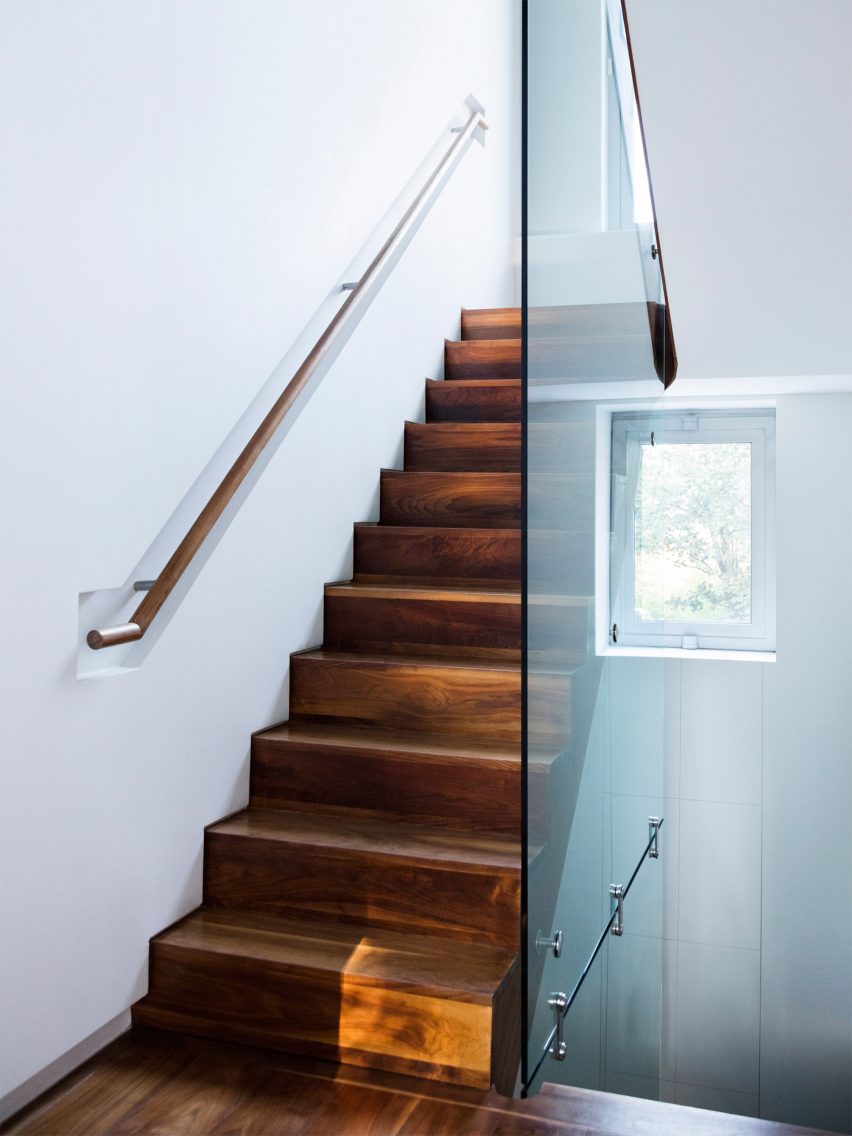
Olivia Mull: What would your brief be for the house?
Tinie Tempah: It's definitely time for a swimming pool, I've been working hard! I want to be able to have lots of land and lots of animals as well. So just a really elegant, beautiful way of being able to contain all of that – like barns and stables – in an economical, eco-friendly way as well.
These days I've started watching Grand Designs and it's really impressive when you see people make really eco-friendly, all-out wooden houses. You get the German ones that people build them from scratch. So maybe something like that.
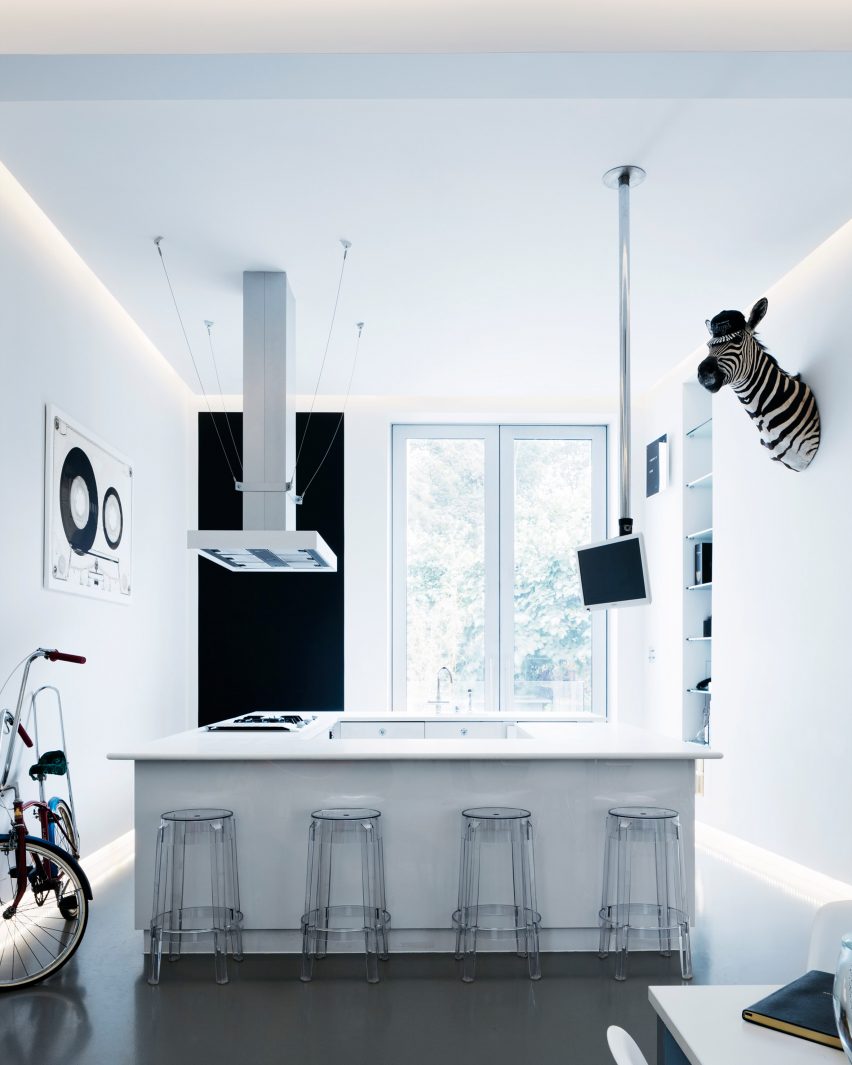
Olivia Mull: Lots of other musicians have gone into fashion and interior design. What do you think of all these things that people like Kanye West and Will.i.am have done?
Tinie Tempah: I think it's great but it's a shame that we live in a world where everyone has to be labelled and everyone has to be in some sort of box, category. But there is no limitation to creativity, it's just being able to have freedom and the means, whether it's the investment or the belief. It's limitless to what you can do and I think it's cool to see people who have been so innovative in music being creative on that front.
It's safe to say I'm a huge Kanye fan. I love his music, I love his visuals, I love the movies that he's put together, I love his trainers. So why wouldn't he able to design an apartment that I liked?
To be honest as well, who are we kidding, when you have the luxury of being well travelled and of being in incredible environments. Most of all the world's most beautiful environments I've been to, whether it's Sandy Lane in Barbados or it's the Kremlin in Russia. You soak it up as a creative and it stays with you. It makes your job of having a vision and drawing inspiration a lot easier than the next person.
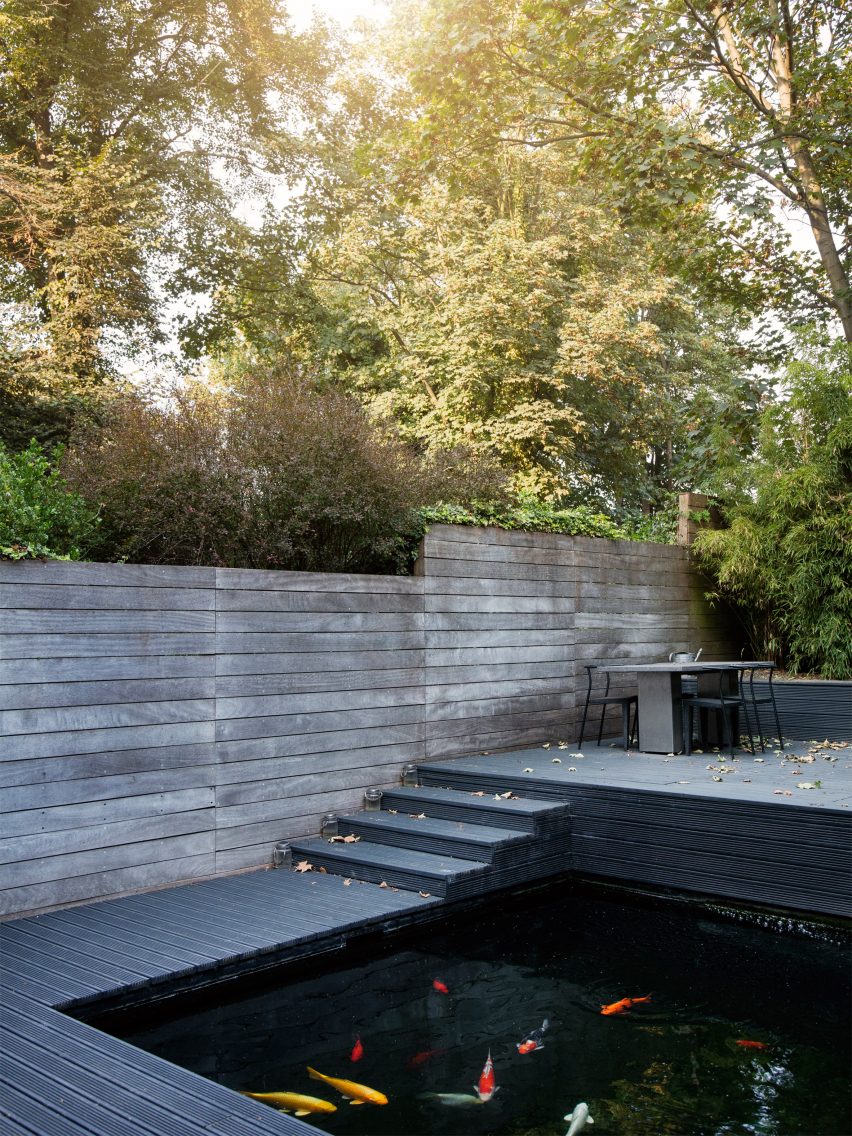
Olivia Mull: Why were you interested in living in east London?
Tinie Tempah: I grew up in southeast London, born and bred. But I was always in east London as a rapper and as an MC. Where I live now is literally a stone's throw away from the origins of grime, where the Dizzie Rascals and the Wileys came from so there's something in that. I think also, when I was younger I had an obsession with east and I like how liberal and free east is.
I looked at some houses in west when I was buying and I remember it feeling a bit snooty and a bit too stuck in its way. A bit too like 'OK, we've been here for 50 years, we're going to judge you' vibe. Whereas east, you can see Kele from Bloc Party and no one would care.
The fact that there's new things popping up every single day in east London too. I didn't want to feel too old, I'm only 28 so I think that's why I stayed in east.
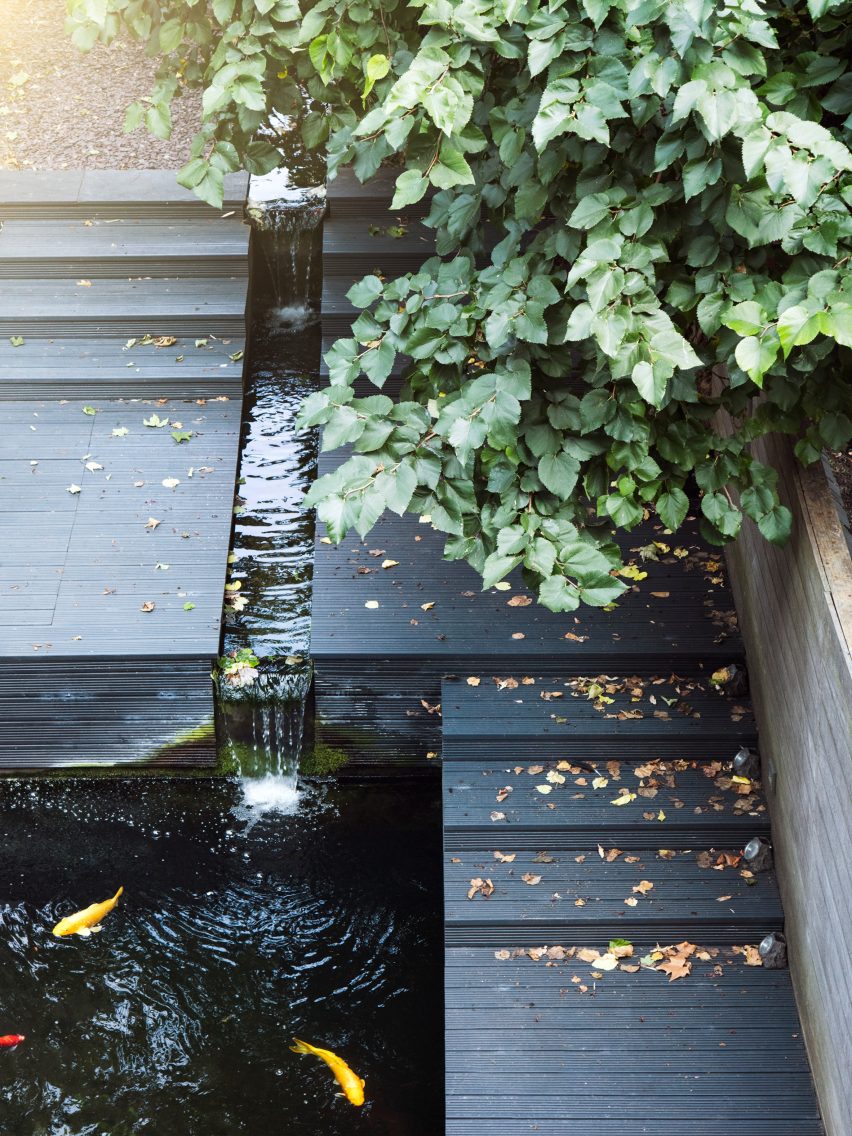
Olivia Mull: You were bought up on the Aylesbury Estate, what was it like growing up there and what impact did it have on you?
Tinie Tempah: I lived on the Aylesbury Estate until I was seven and then I moved to another part of Peckham, which is opposite North Peckham estate until I was 12. To be honest, your house was probably different to my house when I was growing up, but what you know is what you know. When I was younger I didn't know whether I lived in a small house or a big house. Kids just don't.
Regardless of where you live, the most important thing is the community and I feel like there was very much a sense of community there. I also feel council estates can offer people who don't have luxuries like everyone else somewhere affordable.
But I definitely think that there's some ethics in the way council estates are built. If I'm being honest, I always thought growing up that everything was contained. You've got your chemist, you've got your corner shop, you've got your GP. You've got everything within the whole estate basically. Everything is walking distance and so it almost feels like they're designed in remote big landsites to contain you there. I'm kind of focusing on the fact that if you have everything right below you, there's no real reason to leave and I just feel like that might happen to some people. I think on a humanitarian level, it might be something that needs to be looked at.
But then it was perfect to grow up there. I enjoyed it. It's definitely not affected how I've grown up as a person so I don't see how it should affect how anyone else should turn out.